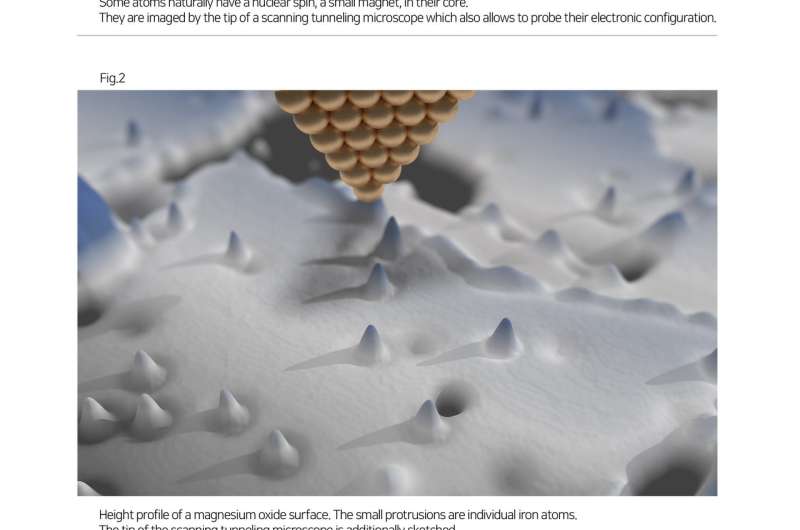

| Date | 18th, Oct 2018 |
|---|
 Described in the figures Credit: Institute for Basic Science (IBS)
Described in the figures Credit: Institute for Basic Science (IBS)
Researchers at the Center for Quantum Nanoscience (QNS) within the Institute for Basic Science (IBS) in South Korea have made a major scientific breakthrough by detecting the nuclear magnetism, or "nuclear spin" of a single atom. In an international collaboration with IBM Research, the University of Oxford and the International Iberian Nanotechnology Laboratory, QNS scientists used advanced and novel techniques to measure the nuclear spin of individual atoms on surfaces for the first time.
Normally the nuclear spin, which describes the magnetism of the atom's core, can only be detected in very large numbers. The findings, published today in the journal Science, show that this is now also possible for single atoms on a surface. To do that the team used a Scanning Tunneling Microscope at IBM Research, which consists of an atomically sharp metal tip and allows researchers to image and probe single atoms.
The two elements that were investigated in this work, iron and titanium, are atoms that can have a different number of neutrons in the atom's core, these are the so-called isotopes. Only certain isotopes of each element have a core with a nuclear spin. It is normally exceedingly hard to measure nuclear spins of individual atoms. Traditionally large numbers of nuclear spins are required, making this advancement so noteworthy.
In order to detect the presence of a nuclear spin within the core of a single atom, the team made use of the hyperfine interaction. This phenomenon describes the coupling between a single atom's nuclear spin and its electron counterpart, that is generally much easier to access. Dr. Philip Willke of the Center for Quantum Nanoscience (QNS), first author of the study, says: "We found that the hyperfine interaction of an atom changed when we moved it to a different position on the surface or if we moved other atoms next to it. In both cases, the electronic structure of the atom changes and the nuclear spin allows us to detect that."
